Understanding the art of search engine optimization (SEO) has become crucial for marketers in the ever-expanding digital arena. With continuously evolving digital marketing trends, online marketers must avoid SEO mistakes and work on plans & strategies to ensure that the website ranks higher on the SERPs. One essential SEO point that needs to be focused upon is keyword gap analysis to get a competitive edge.
To improve the performance of SEO campaigns, it is crucial to enhance the performance of vital SEO metrics that drive website traffic, build brand awareness, increase users' time on the page, etc. You need to focus on conducting market research and conducting competition analysis that gives you an idea on which keywords to target. This comprehensive guide will walk you through every aspect of keyword gap analysis, examining its importance, benefits and how to carry it out successfully to help your website stay ahead of the competitors for the keywords or search terms entered.
What is keyword gap analysis?
Keyword gap analysis is comparing your website with a competitor’s website. Keyword gap analysis is a search engine optimization(SEO) process that involves identifying the keywords your competitors are ranking for, but your website is not. It helps you identify where your keyword targeting approach differs from your competitors, revealing worthwhile possibilities to enhance your SEO performance.
The appropriate keyword strategy is crucial for gap analysis SEO since it affects whether your website will appear in relevant search results and draw in organic visitors. The primary goal is to find keywords with a sufficient search volume that are useful to your business page. To go one step further, keyword gap analysis looks at the terms your competitors have effectively targeted and ranked for. You may learn more about the SEO reports of your competitors, comprehend their content strategy, and identify content gap analysis in your own plan. Performing a keyword gap analysis enables you to optimize your content effectively and prepare SEO reports to help improve the performance of essential SEO metrics and help you stay ahead of your competitors.
Importance of keyword gap analysis

1. Boosts organic traffic - One of the main objectives of search engine optimization is to increase organic traffic to your website by focusing on useful and relevant organic keywords. Choosing keywords that are directly connected to your company or content while considering variables like search volume and competition is the traditional method of doing keyword research. Although this strategy is vital, it might not identify all the possible keywords that could lead visitors or audiences to your website. In this situation, keyword gap analysis is essential
In comparison to conventional keyword research, keyword gap analysis looks at terms outside of your own target list. Analyzing the keywords that your rivals are effectively ranking for but that you are not using is required. These are the undiscovered possibilities that can have a big influence on how well your SEO performs. You might find keywords that you may not have known about or initially explored by performing a keyword mapping or Keyword Gap Analysis. These "gap" keywords describe niches in which your competitors are already succeeding and drawing visitors. You may expand your keyword targeting approach and possibly reach a larger audience by discovering these gaps, which you may have previously overlooked.
As online marketing is different from traditional marketing, it is vital that you must first determine who your main competitors are and collect information on the terms they are ranking for in order to do a keyword gap analysis and find undiscovered possibilities. You may compare your keyword list with competitor keyword research who are utilizing SEO tools like SEMrush keyword gap tool, content gap analysis Ahrefs tool, or Moz tool to gather this information. The gap keywords may then be given priority depending on their relevance, search volume, and level of competition. In order to improve your chances of appearing higher in search results and gaining more organic traffic, you can either generate new content specifically for these organic keywords or optimize current material to do so.
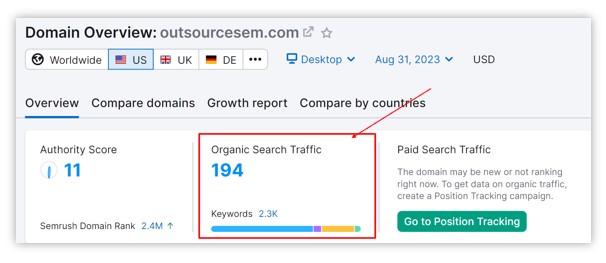
2. Understanding competitor strategies - Creating a successful digital marketing plan & strategy requires an in-depth knowledge of what your competitors are doing in the fiercely competitive area of SEO. Competitor research has always been a key component of any marketing strategy, and it is very important for keyword gap analysis in SEO. You need to focus on market research, competition analysis, etc., to analyze what your competitors are doing and how you can work on an SEO plan, content plan, etc., to increase your website visibility.
The main goal of a keyword gap analysis is to learn more about the entire SEO strategy of your rivals rather than just finding out which keywords they are ranking for. To do this, it is necessary to examine several facets of their online presence, including the content kinds, themes, on-page optimization methods, and backlink profiles that they use. Businesses and marketers may adapt and improve their own SEO efforts, keeping their website competitive in the digital environment and possibly surpassing their competitors by understanding their effective strategies. Identifying useful content is one of the main advantages of knowing competitor strategy through keyword gap analysis. Comparing the content of competitors might highlight weaknesses in your content marketing strategy. Suppose your competitors are writing about subjects you have yet to look into. This allows you to produce worthwhile, pertinent and unique content that would help increase organic traffic and engage your target audience.
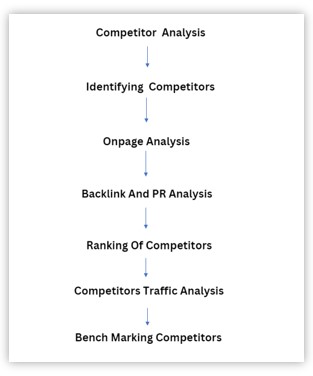
3. Creating content strategy - Any successful online presence depends on the content, and developing an efficient content strategy is crucial for SEO. In this endeavor, keyword gap analysis is a priceless tool as it provides special insights into the content landscape of the website and its competitors. Businesses may better understand their content gaps, areas of strength, and areas for progress by finding the keywords that competitors are ranking for but the website is not targeting.
Finding content gaps is one of the main advantages of adjusting content strategy using keyword gap analysis. Businesses might identify areas where their content coverage may be lacking by comparing the target keywords of competitors with their own. A roadmap for your content development activities is provided by Keyword Gap Analysis. You may either create fresh, high-quality content or optimize current material to focus on the gap keywords after you've identified them. You can outsource content marketing services and hire content specialists for great content for your website. Consequently, your content will be more likely to rank higher in search results and draw in more organic traffic since it will align with user search intent and search engine standards.
4. Prioritize keyword targeting - Any SEO plan requires keyword targeting since it directly impacts how visible a website is in search engine results. However, not every keyword is equally valuable in terms of generating organic traffic and drawing in targeted consumers. By concentrating on the most important and effective keywords for their SEO strategy, organizations may prioritize their keyword targeting efforts with the aid of the keyword gap analysis technique.
Using keyword gap analysis to prioritize keyword targeting has several advantages, one of which is the ability to pinpoint valuable terms that rival businesses are effectively ranking for. Businesses can identify keywords that have successfully generated traffic for their competitors' websites by comparing their keyword lists with those of their rivals. These keywords give chances for companies to target closely related phrases that have shown consumer interest and popularity in their sector.
By doing a keyword gap analysis, you may rank the gap keywords according to their relevance, search volume, and possible effect on the functionality of your website. By concentrating your efforts on the most profitable keywords, you can maximize your chances of showing up higher in search results.<
5. Helps stay ahead of competitors - Markets and industries continually change, and new search trends and keywords often appear. By keeping you updated on the most recent business developments, keyword gap analysis enables you to maintain the relevance and adaptability of your SEO plan. The ability to keep up with the most recent advancements in the business is one of the primary advantages of keyword gap analysis in a constantly changing market. Businesses may see these shifts through competitive research and modify their content and SEO methods when new keywords and search trends arise. Businesses may remain relevant and successful by keeping an eye on the changing market. This adaptability is essential for keeping a competitive edge in your market. If you face difficulty in preparing SEO reports, you can outsource SEO services and offshore services like white label SEO, SEO audit, etc.
How to conduct keyword gap analysis?
With the use of the SEO guide known as "Keyword Gap Analysis," companies and marketers may learn which keywords their rivals are ranking for but which they are not. For better search engine rankings and organic traffic, this research helps optimize content strategy, prioritize keyword targeting, and give insightful information about unexplored prospects. Let's get started with an extensive description of how to carry out a thorough keyword gap analysis:
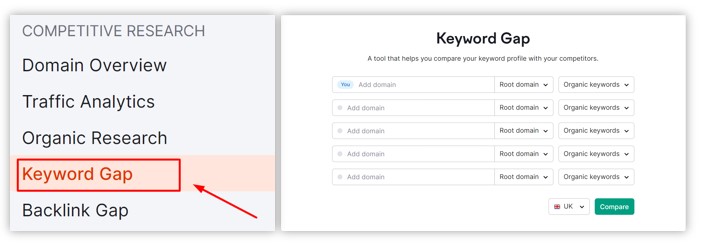
Step 1: Identify competitors
Finding your top competitors in the sector or area you work in is the first keyword gap analysis stage. These websites or companies have comparable keyword and audience targeting strategies as your own. To successfully analyze your competitors' strategy or competitor keyword research, compile a list of your major competitors. Look for companies that constantly achieve high rankings for pertinent keywords and have a strong web presence. Pay attention to both your direct competitors (those with comparable goods or services) and your indirect competitors (those with the same audience in mind but different products or services). You may outsource market research to comprehend better the competitive environment and the players you need to analyze by making a list of these competitors. This phase is crucial because it sets up the following analysis, allowing you to concentrate on the factors that have the biggest effects on how well you do online.
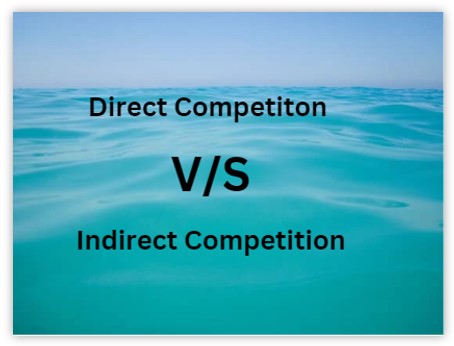
Step 2: Compile information on the competition
When you've identified your competitors, it's important to gather information about their SEO performance and keyword rankings. This can be done using tools such as SEMrush, Ahrefs, Moz, and SpyFu. These tools provide valuable insights into your competitors' organic keywords, backlink profiles, content performance, and other SEO indicators. By analyzing this data, you can gain a better understanding of your competitors' SEO tactics, including the keywords they use, how well they rank, and how successful their content is in search results. Using this information, you can make informed, data-driven decisions and tailor your strategy to better compete with your rivals.
You can consider preparing SEO reports for keyword gap analysis after performing competitor research so that you have a clear idea of essential changes that need to be made in your strategic marketing plan. Once you have a complete idea of the content marketing changes, you can focus on including them in your marketing strategy so that your webpage ranks for the users' search queries. In PPC advertising, you ensure to improve your ad rank & position so that your paid ads rank higher on the SERPs. For this, you focus on conducting PPC keyword research, performing PPC campaign analysis, PPC audit, etc., to generate quality traffic, build brand awareness, etc. Similarly, you can compile information on the competition by conducting an SEO audit that helps you to know what changes need to be done to improve the PPC campaign performance.
Step 3: Compare keyword lists
The next step is to compare the keyword list on your website with those of your competitors using the competition data you have available. Look for keywords you and your competitors are pursuing or those that fall into this category. These common keywords show markets where your competitors are already active and maybe winning. Focus on finding the keywords that your competitors are ranking for but that you still need to choose to target. These are the gap keywords, and your SEO strategy may take advantage of them. You may prioritize these keywords and focus on content optimization by knowing which keywords your competitors have been able to rank well for while you have not.
Step 4: Analyze competitors content
Reviewing the content your competitors have written for these particular phrases is critical once you have determined the gap keywords. Pay special attention to the kind of material they create, how it is presented, and how much information is included. This content analysis can provide insightful information on what appeals to your competitors' audience and why their material does well in search engines.
Make use of this knowledge to improve your content strategy. Think about producing material that is more thorough, more suited for search engines, or focuses on a particular problem that your rivals may be ignoring. You may adjust your strategy to match the demands of your audience and increase your chances of ranking better in search results by knowing the content strategies your competitors use successfully.
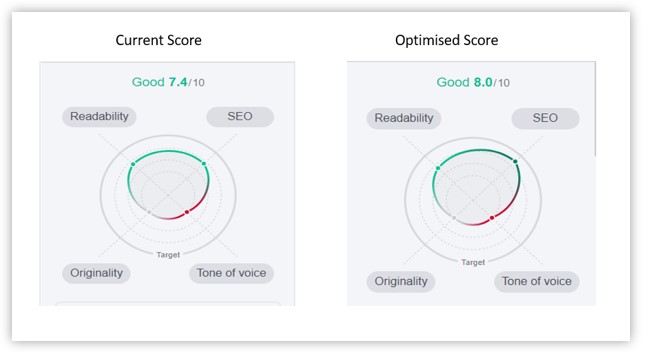
Step 5: Assess backlink profiles
Analyzing the backlink profiles of your rivals can offer insightful information because SEO backlinks are an essential component of SEO. Analyze the high-quality backlink sources your rivals have accumulated and their link-building tactics by looking for them. Finding possible chances for link-building can increase your website's authority and search engine rankings. Search for reputable and high-quality backlink sources that your rivals have accumulated. To find possible link-building chances for your website, evaluate their link-building tactics. Reach out to websites that link to your rivals' material while also providing them with useful information or content that might lead to backlinks for your website. Through competition analysis, you may boost your website's authority, raise its search engine ranks, and increase organic traffic.
Step 6: Determine keyword competitiveness
It is important to evaluate how competitive the gap keywords you have found are since not all keywords are created equal. Data about keyword difficulty, search volume, and level of competition may all be found in SEO tools. Conversely, low-competition keywords may offer chances to rank higher and build authority in particular niches. Target keywords with a tolerable search volume and competitiveness to achieve a balanced strategy. Give top priority to keywords that support your company's objectives and have a decent chance of doing well in search engine rankings.
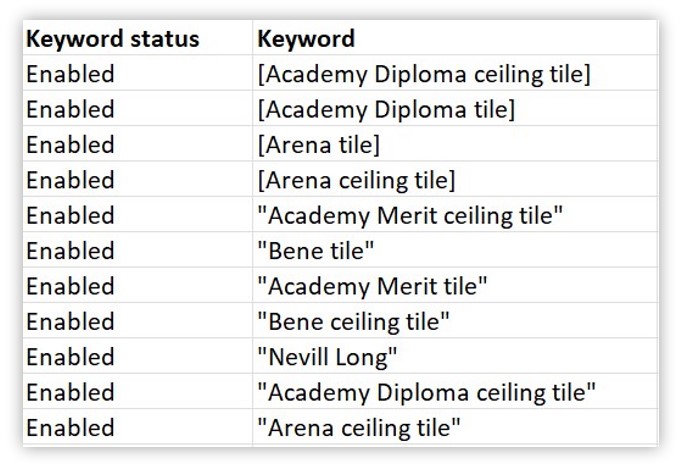
Step 7: Understanding user intent
The foundation of a great SEO strategy is user intent. It refers to the motivation behind a user's search query. Understanding the purpose of user searches requires analyzing the gap keywords. Do they want to learn, buy, or find a certain kind of good or service?
By recognizing user intent, you may modify your content to meet user needs and deliver insightful responses to their inquiries. This alignment increases customer pleasure, promotes longer stay periods, and eventually, user experience raises your website's ranking potential. For instance, you may produce content that compares several items, highlighting the distinctive attributes of each and assisting users in making a purchase decision if a gap term signals user intent for product comparison.
Step 8: Prioritize keyword gap
Prioritize the gap keywords that have the most potential to increase the performance of your website based on the facts and insights from the investigation. Take into account the relationship between search volume and competitiveness, as well as how relevant each is to your company.
Short-tail vs long-tail keyword: Which keyword to choose?
Regarding the timeless debate over short vs. long-tail keywords, the decision ultimately boils down to your SEO report's precise aims and structure. Short-tail keywords are wide and generic in nature, with large search volumes and fierce competition. Because they are prominent and often searched phrases, they are appealing to companies looking to enhance exposure and brand awareness. Companies may attract a big quantity of traffic to their websites and reach a larger audience by targeting short-tail keywords.
Short-tail keywords do, however, provide a unique set of difficulties. They compete fiercely with multiple other websites for the top places in search engine results as a result of their popularity. Ranking for competitive short-tail keywords can be a difficult undertaking for smaller firms. Moreover, it might be difficult to ascertain the precise purpose of consumer searching for short-tail keywords due to their broad nature. This uncertainty might result in poorer conversion rates because the audience may be at different phases of their search journey and not necessarily prepared to purchase or take action.
Long-tail keywords, on the other hand, are more comprehensive and often have three or more words. They target specific or in-depth search queries, drawing people with a specific goal. Long-tail keywords have fewer search volumes and less competition, which makes it simpler to rank for them, especially in specialized markets. Long-tail keywords are extremely beneficial for drawing in highly focused traffic since people who employ them clearly know what they want. This tailored traffic typically results in greater engagement, lower bounce rates and better conversion rates. Long-tail keywords do, however, provide some difficulties. They may not draw as much traffic as short-tail keywords due to the lower search volumes.
Long-tail keywords must be found through more thorough keyword research since they are more specialized and diverse. An SEO plan may need to use a mix of long-tail keywords to address a wide range of user inquiries successfully.
To sum up, there is no one-size-fits-all solution to the short-tail vs long-tail keyword argument. Companies should carefully assess their goals, target market, and amount of industry rivalry. Short-tail keywords can help increase brand awareness and audience reach. Long-tail keywords, on the other hand, are more efficient for bringing in highly focused visitors and increasing interaction. To maximize online visibility and address a variety of user demands and intentions, an SEO strategy should strike the correct balance and use both short-tail and long-tail keywords.

Conclusion
In the ever-evolving world of SEO, staying ahead of the competition is crucial. To find untapped possibilities, comprehend your competitor’s plans, improve & track your content and SEO goals, keyword gap analysis offers a strategic edge. By integrating this potent strategy into your SEO efforts, you may direct your website towards better ranks, more organic traffic, and, eventually, more success in the digital sphere. Take advantage of keyword gap analysis as a crucial SEO tool, and watch as your online exposure soars to new heights.
Furthermore, any SEO plan's success depends on harnessing the power of competitive data via keyword gap analysis. Businesses can set themselves apart, obtain higher search engine results, and establish their authority in the competitive digital world by embracing this method and constantly refining their content and keyword targeting. Keyword Gap Analysis is a critical tool in the armory of organizations looking to grow and prosper in the ever-changing trends of digital marketing. Find keyword gap analysis a tough task to perform. You can contact a digital marketing agency with expertise in local SEO, video SEO, e-commerce SEO, guest posting, enterprise SEO, small business SEO, link building, SEO copywriting, detox & penalty removal, etc. The SEO experts would help you with all the essential factors needed in your keyword gap analysis strategy. By availing our digital marketing services for your business like lawyer SEO, construction SEO, plumbing SEO, painting SEO, HVAC SEO and etc, you can increase profitability of your industry at a much faster rate.
References:
• Keyword gap
• How to conduct a competitor keyword analysis
